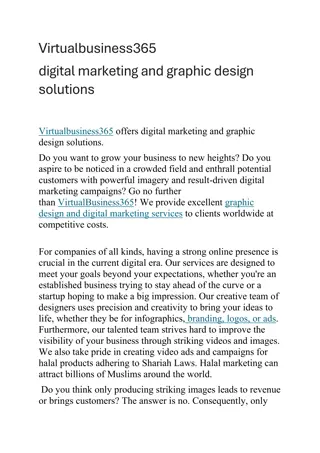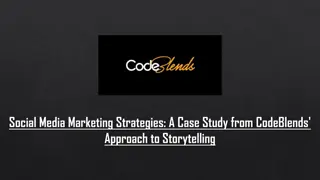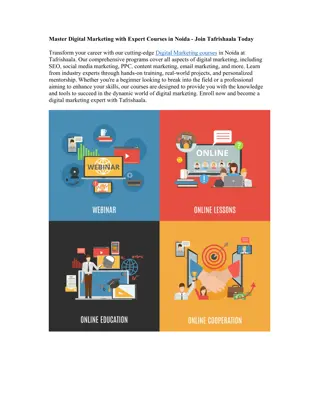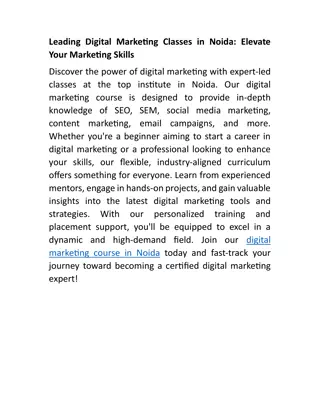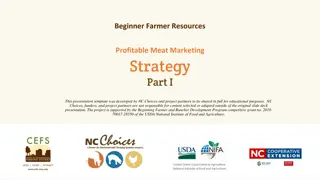Business to Business Marketing
Exploring the significance of corporate social responsibility, sustainability, and ethical frameworks in B2B strategic decision-making. Understanding shareholder, customer, supplier, and relationship values in business marketing strategy formulation. Differentiating between formal planned strategy and resource-based view. Emphasizing the role of relationships and networks in strategy development.
Download Presentation

Please find below an Image/Link to download the presentation.
The content on the website is provided AS IS for your information and personal use only. It may not be sold, licensed, or shared on other websites without obtaining consent from the author.If you encounter any issues during the download, it is possible that the publisher has removed the file from their server.
You are allowed to download the files provided on this website for personal or commercial use, subject to the condition that they are used lawfully. All files are the property of their respective owners.
The content on the website is provided AS IS for your information and personal use only. It may not be sold, licensed, or shared on other websites without obtaining consent from the author.
E N D
Presentation Transcript
Business to Business Marketing Chapter 4 Responsible Business to Business Strategy
Learning outcomes Understand the significance of corporate social responsibility and sustainability for business-to-business strategic decision-making; Be able to apply several different ethical frameworks to the analysis of decisions in business marketing; Know what shareholder value, customer value, supplier value and relationship value are, and what role they play in the formulation of business marketing strategy;
Learning outcomes Be able to explain the similarities and differences between the formal, planned approach to strategy and the resource-based view of strategy; and Understand the role played by the relationships and networks of which the firm is a part in the formulation of business marketing strategy.
Corporate Social Responsibility a concept whereby companies integrate social and environmental concerns in their business operations and in their interactions with stakeholders on a voluntary basis the responsibility of enterprises for their impacts on society
Sustainability development that meets the needs of the present without compromising the ability of future generations to meet their own needs consuming resources at a rate which allows them to be replaced, and only producing pollution at a rate that the environment can assimilate
Strategy Concerns decisions that have a major effect on the performance of the firm. Sub-divided into corporate strategy (concerning the overall design of a corporation comprising multiple business units) and business unit strategy (concerning the competitive strategies of individual businesses). Marketing strategies are devised and implemented at the business unit level.
Strategy The overall aim of business strategy in profit- seeking firms is to increase long-term shareholder value. The key contribution that marketing strategy in business-to-business firms should make is to understand, analyze and deliver customer value. Customer value is defined as the trade-off between what a customer has to give up and what the customer receives in a business transaction or relationship.
The Relationship Spectrum Transactional Value-added Collaborative Exchanges Exchanges Exchanges Anonymous transactions/ Complete collaboration Automated purchasing and integration of supplier with customer or channel partner
Relationship value Holistic relationship assessment E.g. Hogan (2001) the future benefits to be derived over the life of the relationship , defined operationally as a NPV concept, i.e. give-get definition Conceptually very close (identical) to broad give-get definitions of customer value Incremental assessment of the relational value of an exchange episode (E.g. Ravald & Gr nroos 1996)
Approaches to strategy Rational planning approach proposes that good strategy results from a systematic, planned approach to strategy development. Resource-based approach focuses on key internal resources of the firm as the source of enduring competitive advantage. Relationships and networks view of strategy contends that network positional resources are the key to success in business markets.
American Marketing Association: Statement of Ethics (Extract) As Marketers, we must: 1. Do no harm. This means consciously avoiding harmful actions or omissions by embodying high ethical standards and adhering to all applicable laws and regulations in the choices we make. 2. Foster trust in the marketing system. This means striving for good faith and fair dealing so as to contribute toward the efficacy of the exchange process as well as avoiding deception in product design, pricing, communication, and delivery of distribution. 3. Embrace ethical values. This means building relationships and enhancing consumer confidence in the integrity of marketing by affirming these core values: honesty, responsibility, fairness, respect, transparency and citizenship. (Source: www.marketingpower.com)
Australian Marketing Institute: Code of Professional Conduct (Extract) 1. Members shall conduct their professional activities with respect for the public interest. 2. Members shall at all times act with integrity in dealing with clients or employers, past and present, with their fellow members and with the general public. 3. Members shall not intentionally disseminate false and misleading information, whether written, spoken or implied nor conceal any relevant fact. They have a duty to maintain truth, accuracy and good taste in advertising, sales promotion and all other aspects of marketing. (Source: www.ami.org.au)
Ethical approaches Managerial egoism what is best for the company? Utilitarianism evaluating the costs and benefits to all stakeholders Deontological approach abiding by codes of conduct Virtue ethics learning and applying sound judgement based on integrity








